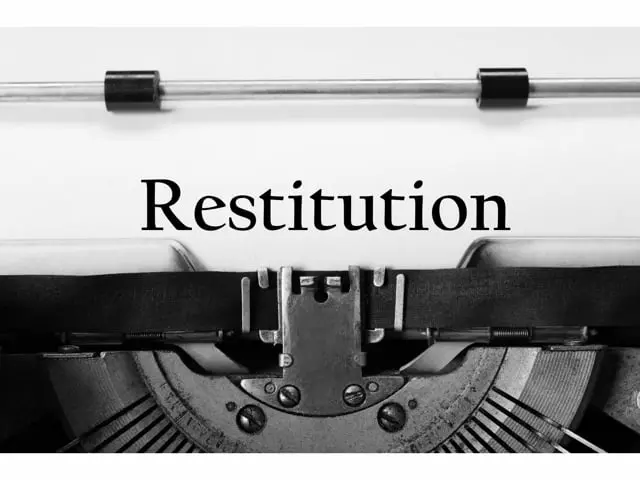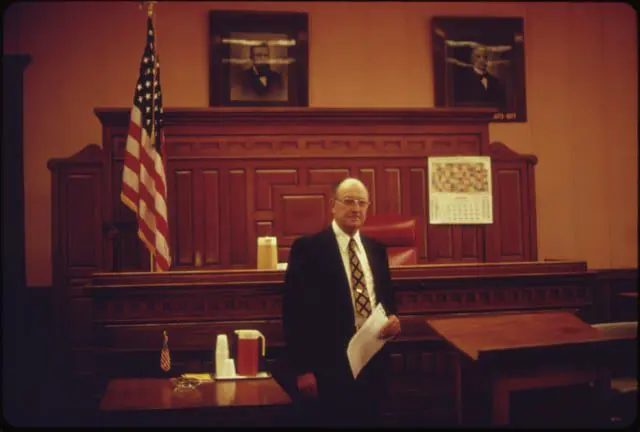When facing cargos por robo, navigating the legal system can be a daunting and complex process. One of the first hurdles many defendants encounter is securing release from custody through the fianza system. Understanding how bail bonds work for burglary charges is crucial for those accused of this serious crime and their families. This comprehensive guide will explore the intricacies of burglary charges, the bail bond process, and strategies for building a strong defense.
Robo is a serious offense that involves unlawfully entering a structure with the intent to commit a crime inside. Unlike simple theft, burglary doesn’t require that anything actually be stolen – the mere act of breaking in with criminal intent is sufficient for a burglary charge. In most jurisdictions, burglary is classified as a felony offense, which carries potentially severe penalties including significant prison time and hefty fines.
When someone is arrested on burglary charges, they will typically be taken to jail for booking and processing. During this time, a bail amount may be set based on factors like the severity of the alleged crime, the defendant’s criminal history, and their perceived flight risk. Bail serves as a form of insurance for the court, meant to ensure the defendant will return for future court appearances if released from custody.
For many defendants and their families, posting the full bail amount in cash is simply not financially feasible. This is where bail bond companies come into play. A bail bondsman can post a surety bond with the court for a fraction of the total bail amount, typically 10-15% paid as a non-refundable fee. This allows the defendant to secure release without having to come up with the entire bail sum upfront.
The bail bond process for burglary charges follows several key steps:
- Arrest and booking: The defendant is taken into custody and processed at the local jail.
- Bail hearing: A judge sets the bail amount based on the circumstances of the case.
- Contacting a bail bond agent: The defendant or their family reaches out to a licensed bail bond company for assistance.
- Paying the premium: A non-refundable fee (usually 10-15% of the total bail) is paid to the bondsman.
- Posting the bond: The bail agent posts the full bond amount with the court, securing the defendant’s release.
- Release conditions: The defendant agrees to appear for all required court dates and may have other release conditions imposed.
It’s important to note that using a bail bond service comes with significant responsibilities. The defendant is agreeing to appear for all court dates, and failure to do so can result in the full bail amount being owed to the bail bond company. Additionally, the bondsman may require collateral to secure the bond, such as property or valuable assets.
Para los que se enfrentan a cargos por robo, working with an experienced abogado penalista is crucial. A skilled lawyer can not only help navigate the bail process but also begin building a strong defense strategy right away. Common defenses to burglary charges may include:
- Lack of intent: Arguing that the defendant did not have the intent to commit a crime upon entering the structure.
- Mistaken identity: Challenging eyewitness identifications or presenting alibi evidence.
- Consent: Demonstrating that the defendant had permission to enter the property.
- Insufficient evidence: Highlighting weaknesses in the prosecution’s case or challenging the admissibility of certain evidence.
The specific penalties for a burglary conviction can vary widely depending on the jurisdiction and circumstances of the crime. In general, burglary is classified into degrees based on factors like whether the structure was occupied, if weapons were involved, and the time of day the offense occurred. First-degree burglary typically carries the harshest sentences, while lower degrees may have somewhat lighter penalties.
For example, in California, first-degree burglary (residential burglary) is punishable by up to 6 years in state prison. Second-degree burglary (commercial burglary) can result in up to 3 years in county jail. Other states may have different sentencing guidelines, but burglary is universally treated as a serious felony offense.
Beyond the immediate legal consequences, a burglary conviction can have far-reaching impacts on a person’s life. It may affect future employment prospects, housing options, and even civil rights like voting or owning firearms. This underscores the importance of mounting a vigorous defense and exploring all possible legal options.
One critical aspect of building a strong defense is thoroughly investigating the circumstances of the alleged burglary. This may involve:
- Reviewing police reports and witness statements for inconsistencies
- Analyzing physical evidence and forensic reports
- Examining surveillance footage if available
- Interviewing potential witnesses
- Exploring the defendant’s alibi and gathering supporting evidence
A skilled defense attorney will leave no stone unturned in challenging the prosecution’s case and protecting their client’s rights throughout the legal process.
It’s worth noting that in some cases, plea bargaining may be a viable option for those facing burglary charges. This involves negotiating with prosecutors to potentially reduce the charges or agree to a lighter sentence in exchange for a guilty plea. While this approach isn’t appropriate in every situation, it can sometimes lead to a more favorable outcome than risking a trial with uncertain results.
For defendants who secure release through fianzas, it’s crucial to comply with all conditions of release and attend all required court appearances. Failing to do so not only jeopardizes the bail bond but can result in additional criminal charges for failure to appear. Staying in close communication with both the bail bond agent and defense attorney is essential throughout the legal process.
As the case progresses, there may be opportunities to challenge the prosecution’s evidence through pretrial motions. For example, a motion to suppress evidence could be filed if there are concerns about the legality of the search that led to the discovery of incriminating items. Similarly, if the defendant’s rights were violated during the arrest or interrogation process, this could form the basis for having certain evidence excluded from trial.
Building a strong defense strategy also involves preparing for the possibility of trial. This may include:
- Identifying and preparing expert witnesses
- Developing compelling opening and closing statements
- Preparing the defendant to testify (if deemed appropriate)
- Anticipating and countering the prosecution’s arguments
- Selecting and instructing jurors during voir dire
Even if a case ultimately doesn’t go to trial, thorough preparation can strengthen the defense’s position during plea negotiations or other pretrial proceedings.
It’s important to recognize that the emotional and psychological toll of facing burglary charges can be significant. Defendants and their families may benefit from seeking support through counseling or support groups for those involved in the criminal justice system. Maintaining a strong support network can be crucial for weathering the challenges of a criminal case.
For those who are convicted of burglary, there may be opportunities for rehabilitation and reintegration into society after serving their sentence. Many jurisdictions offer programs aimed at reducing recidivism and helping former offenders build productive lives. These may include job training, substance abuse treatment, education programs, and other support services.
The bail bond industry itself has faced scrutiny and calls for reform in recent years. Critics argue that the current system disproportionately affects low-income defendants who may struggle to afford even the 10-15% premium charged by bail bond companies. This has led to discussions about alternative pretrial release systems that rely less on monetary bail and more on risk assessment tools and supervised release programs.
Some jurisdictions have implemented reforms aimed at reducing reliance on cash bail, particularly for non-violent offenses. While burglary is generally considered a more serious crime that may still warrant significant bail amounts, these broader reforms could potentially impact how bail is set and administered in burglary cases as well.
It’s worth noting that the specific laws and procedures surrounding burglary charges and fianza can vary significantly from state to state. For example:
- In New York, recent bail reform laws have eliminated cash bail for many non-violent offenses, though burglary in the second degree (a violent felony) still qualifies for bail.
- California’s bail system underwent significant changes with the passage of SB 10 in 2018, which aimed to replace cash bail with a risk assessment system. However, implementation of this law has been delayed pending a referendum.
- Texas maintains a more traditional bail system but has faced legal challenges and calls for reform in recent years.
Given these variations, it’s crucial for defendants and their families to work with local attorneys who are well-versed in the specific laws and procedures of their jurisdiction.
The intersection of technology and the criminal justice system is also worth considering in the context of burglary charges and bail. For example:
- Electronic monitoring devices may be used as a condition of pretrial release, allowing defendants to remain in the community while ensuring they comply with restrictions like house arrest or curfews.
- Video conferencing technology is increasingly being used for bail hearings and other court proceedings, potentially streamlining the process but also raising concerns about defendants’ rights to in-person hearings.
- Data analytics and risk assessment algorithms are being employed in some jurisdictions to help determine bail amounts and release conditions, though these tools have faced criticism for potential bias.
As technology continues to evolve, it’s likely to play an increasingly significant role in how burglary cases are investigated, prosecuted, and adjudicated.
The COVID-19 pandemic has also had a notable impact on the criminal justice system, including how burglary cases and bail proceedings are handled. Many jurisdictions have implemented measures to reduce jail populations and minimize in-person court appearances, which may affect bail practices and case processing times. While some of these changes may be temporary, others could lead to longer-term shifts in how the system operates.
For those facing burglary charges, it’s crucial to understand that every case is unique. The specific circumstances of the alleged offense, the defendant’s background and criminal history, and the practices of the local court system will all play a role in determining how the case unfolds. This underscores the importance of working with experienced legal counsel who can provide personalized guidance and advocacy.
In conclusion, navigating burglary charges and the bail bond process requires a thorough understanding of the legal system and a strategic approach to building a defense. By working closely with skilled attorneys, bail bond professionals, and support networks, defendants can put themselves in the best possible position to achieve a favorable outcome. Whether through negotiating a plea agreement, mounting a vigorous defense at trial, or exploring alternative sentencing options, there are often multiple paths forward even in serious burglary cases.
As the criminal justice system continues to evolve, staying informed about changes in laws, procedures, and best practices is crucial for anyone involved in a burglary case. By leveraging all available resources and approaching the legal process with patience and diligence, defendants can navigate this challenging situation and work towards the best possible resolution.
Sources:
- https://www.shouselaw.com/ca/blog/bail-bonds/
- https://www.nolo.com/legal-encyclopedia/burglary-basics-32640.html
- https://www.findlaw.com/criminal/criminal-charges/burglary-penalties-and-sentencing.html
- https://www.americanbar.org/groups/public_education/publications/insights-on-law-and-society/volume-21/issue-3/the-bail-bond-system-and-rule-of-law/
- https://www.ibisworld.com/united-states/market-size/bail-bond-services/5002/
- https://www.brennancenter.org/our-work/research-reports/challenges-advancing-bail-reform
- https://www.ojp.gov/ncjrs/virtual-library/abstracts/commercial-bail-bonding-how-it-works-summary-final-report
- https://www.investopedia.com/terms/b/bail-bond.asp
- https://www.americanprogress.org/article/fact-sheet-profit-over-people/









